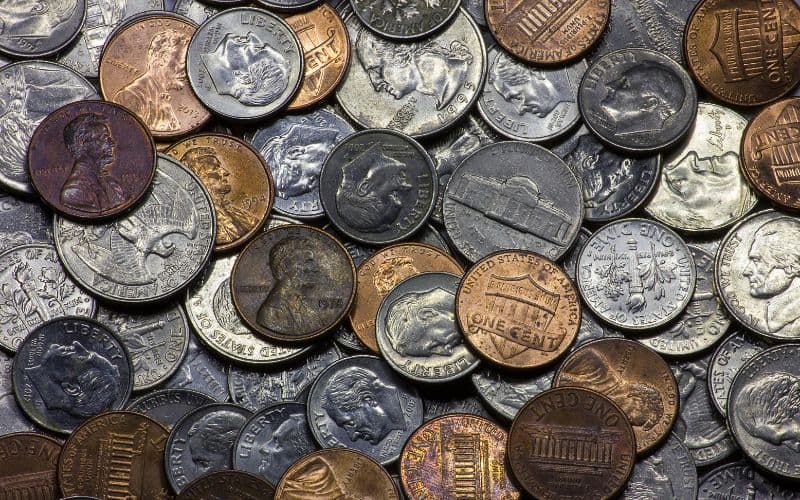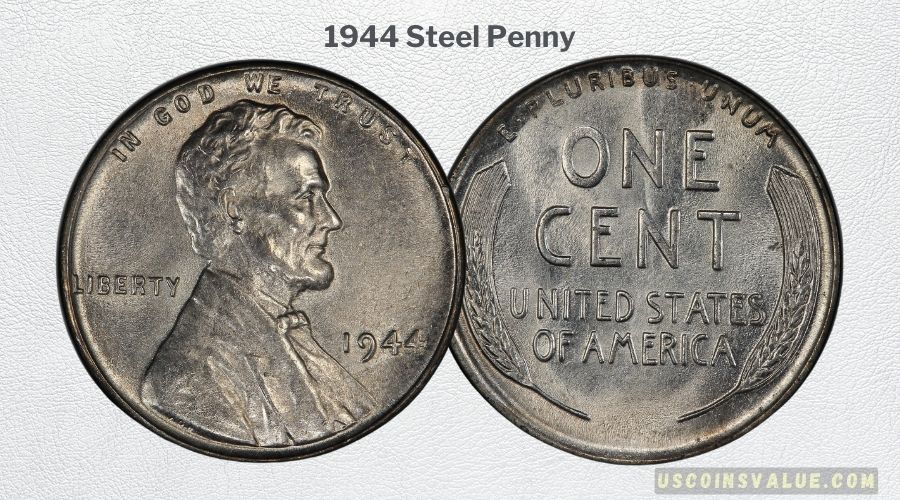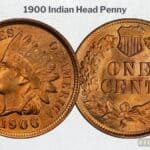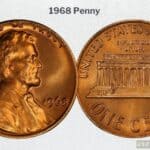U.S. coins have a billion-dollar collectible market due to their impeccable collector’s value. However, have you ever wondered if these popular coins are magnetic or non-magnetic? Made out of a variety of metals, like nickel, copper, and zinc, surely some have to be magnetic?
Surprisingly enough, only two U.S. coins are magnetic – the 1943 Cents and the Steel variety of the 1944 Cent. These are the only coins with strong enough magnetic properties that can be noticed with a magnet.
This article explores the magnetic properties of U.S. coins, dives into the materials used in their mintage, and answers common questions about the magnetism of coins from other regions, including the U.K. and ancient Roman coins.
Do Coins’ Metal Stick to Magnets?
Firstly, it is important to note that ‘coin sticking’ is not ‘coin magnetism’. If a coin sticks onto another coin or surface, it can be due to the dampness or oiliness of these surfaces rather than the magnetic properties of the coin. Coin sticking is a nifty trick to wow an audience, but it is due to something other than magnetism.
Secondly, all materials have some magnetic properties; they only differ in range in terms of strong to weak magnetism. In highly magnetic objects like iron, the attractions are strong and immediate, while in other materials, the magnetic effect can only be seen under a microscope in a specialized lab.
With that said, let’s see what U.S. coins are made of.
Current circulation coins in the U.S. are made of mostly copper, nickel, and zinc, all in varying compositions. However, historically speaking, the full list of metals used to strike coins includes:
1. Copper
So, are copper coins magnetic?
Copper is not magnetic, but it is an electrical conductor. Therefore, any coin with a higher copper composition will inevitably be non-magnetic.
An example is the Nickel coin, which contains 75% copper and 25% nickel. Despite the nickel composition, the coin is non-magnetic since the small amount of nickel cannot visibly attract magnets.
However, although predominantly copper coins aren’t magnetic, they interact with moving magnetic fields, creating a very interesting phenomenon that may be confused with magnetism.
Copper is an electrical conductor. When a magnet approaches any conducting object like copper or aluminum, a magnetic field forms around it; this magnetic field then induces a flow of electric currents in copper, an effect known as eddy currents.
Eddy currents are like swirling whirlpools of electricity that circulate within the copper when it’s exposed to a changing magnetic field. These currents are called “eddy” because they move in circles, just like water in a whirlpool.
Finally, the eddy currents produce their own magnetic field, which opposes the incoming magnetic field. This results in a repulsive force between the magnet and the copper. If you’ve ever tried to push two magnets together and felt them resist each other, you’ve experienced a small-scale version of this effect.
It is possible that the ‘magnetic coin’ is not really magnetic but rather is undergoing the ‘eddy current effect.’
Fun Fact: This effect is useful in the real world, where it is used to slow down or stop high-speed trains using eddy current brakes.
Please remember that the effect is only visible if a string magnet or huge copper material is used.
U.S. coins made of a higher copper content won’t show any visible signs of magnetism.
2. Zinc
Zinc is also non-magnetic but can conduct electricity as well. This means coins with more Zinc content may also experience the ‘eddy current effect,’ although in a much lower range.
As a non-magnetic material, you won’t notice any signs of magnetism in U.S. coins made of high-zinc content.
3. Nickel
Nickel is a magnetic material and an electrical conductor.
But, all U.S. coins with nickel only have nickel composition at 25% or lower; the other 75% or more is made of a non-magnetic material like copper. This means that even if a U.S. coin contains nickel, it won’t be magnetic.
4. Steel
Steel is a good electrical conductor and also a magnetic material due to its high iron content.
The only coins in U.S. history made from steel are:
- 1943 Cents – Made of 99% steel with a thin layer of zinc.
- 1944 Steel Cent – A transitional error coin made of the previous year’s planchet composition (99% steel and a thin layer of zinc)
5. Precious Metals – Gold and Silver
Precious gold and silver metals make up some of the U.S. bullion and commemorative coins. The last coin to use silver was the 1970 Kennedy Half-Dollar, but some precious metal bullion coins are still minted to date and sold as collectibles or investments.
These metals are not magnetic, and neither are the coins made from them.
What Coins Are Magnetic – Circulation Coins
So, what metal coins are magnetic in the current circulation of U.S. coins?
1. Is A Penny Magnetic
The current circulation penny, or Cent/One-Cent, is made of copper-plated zinc (2.5% copper and 97.5% zinc). Both materials are non-magnetic, and so is the penny.
The only magnetic pennies are those made out of steel: the 1943 Cent and the 1944 Steel Cent.
Fun Fact: There was a transitional error in the 1943 Cents that led to the creation of the 1943 Bronze Penny – this coin is worth $1,000,000 in the best condition (MS63) and stands as the most expensive penny in American history.
2. Is Nickel Magnetic
Current circulation nickel coins are made of a cupronickel (25% nickel and 75% copper).
Due to the low nickel content, the nickels are also non-magnetic.
3. Are Dimes Magnetic
Today’s circulation dimes are also made of cupronickel, but in this case, the composition is 8.33% nickel and 91.67 copper.
At 8.33% composition, the nickel is too low to display any visible magnetic properties.
4. Are Quarters Magnetic
Lastly, the current lineup of quarters comprises the same composition as the dime – 8.33% nickel and 91.67 copper.
Hence, similar to the dime, the U.S. quarters are non-magnetic coins.
Frequently Asked Questions
Are U.K. coins magnetic?
The only magnetic U.K. coins are the 1p and 2p copper-plated steel from 1992 and the 5p and 10p coins from 2012 made out of nickel-plated steel.
Other U.K. coins are typically composed of copper, nickel, and zinc. The composition of these coins is filled with more non-magnetic metals (copper and zinc) than magnetic; hence, these coins won’t be attracted to a magnet.
Are Canadian coins magnetic?
Unlike American coins, many Canadian coins are magnetic since they are mostly nickel and steel. An example is the Canadian Dime (1968 – 1999), which is magnetic because its core contains high nickel content.
Any Canadian Coin with a P (plated-on-steel-planchets) is magnetic since steel contains magnetic iron.
Are Roman coins magnetic?
Roman coins are not magnetic since ancient Roman coins were made primarily from a variety of copper, silver, and gold. The composition of these coins is non-magnetic; therefore, the coins are non-magnetic, too.
Conclusion
Only the 1943 Cents and 1944 Steel Cent Variety are magnetic due to the high iron content in the composition.
Other pennies, nickels, dimes, and quarters may contain small amounts of nickel, which in rare situations can show weak attraction to strong magnets but are generally considered non-magnetic.
When it comes to coins from other regions, such as the U.K. and Canada, you will find that several coins are magnetic since they have a high content of steel and nickel.




